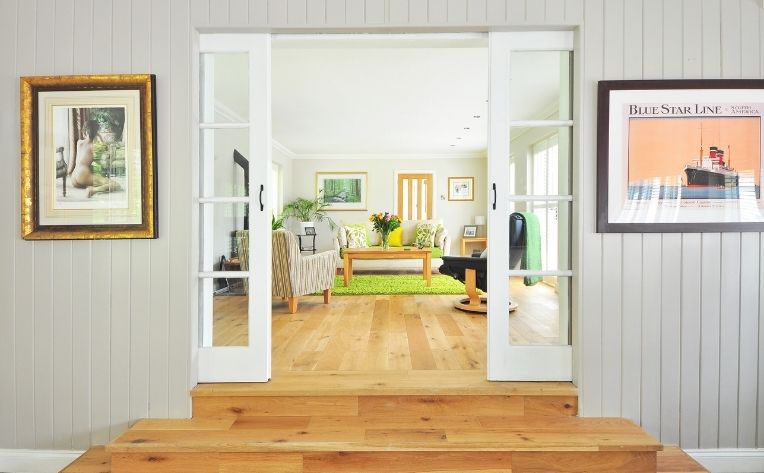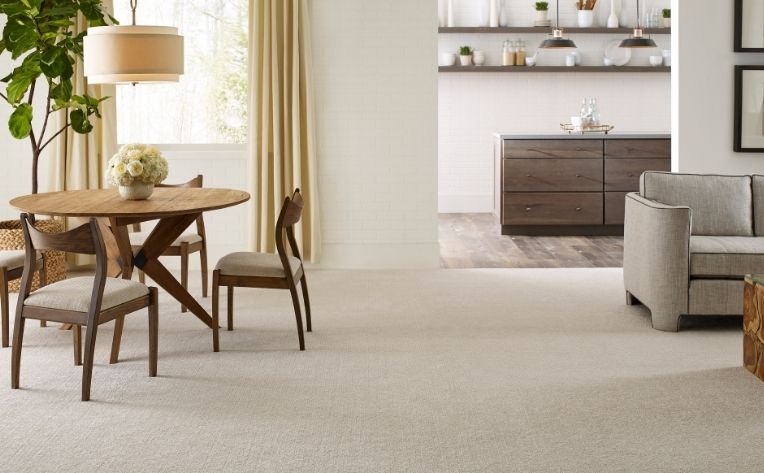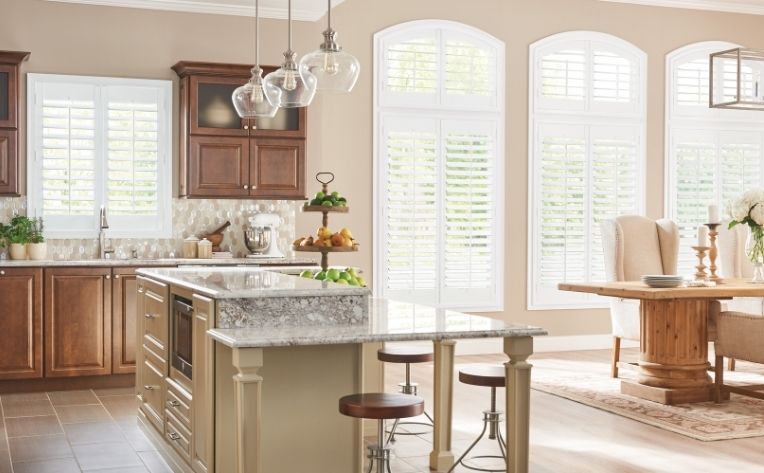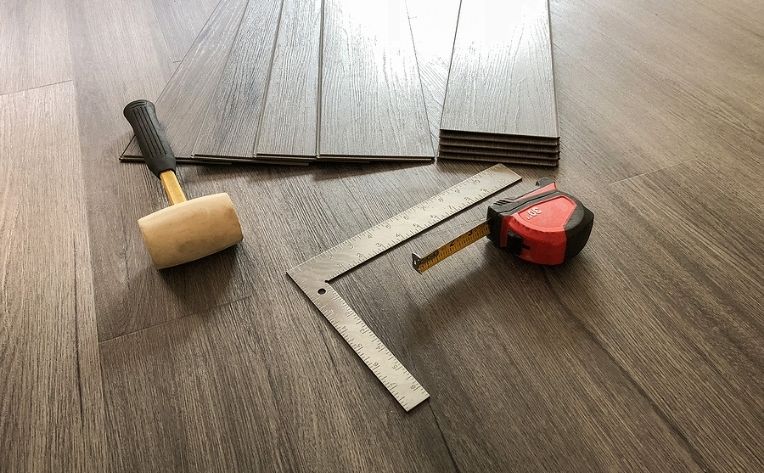
Floor transitions may not be the first thing you think of when planning a home renovation. Most likely, you’re caught up in the vinyl vs. laminate debate or considering whether carpet is too risky for your messy household or trying to pick the perfect tile. We understand! But transitions between floors are an important component in any home to make sure all your floor design choices blend seamlessly from room to room.
Now, what do we mean by floor transitions? Think of a classic door threshold—that raised strip that you step on or over when entering a room. Without floor transitions, we would have frayed carpet edges running up against unfinished hardwood planks or tile grout. Thresholds—the object and the word itself—originated from medieval farmhouse floors, which were covered in straw and hay. That debris (thresh) would scatter when the wind came through the door, so they fastened planks across the bottom of the doorway to keep the thresh out—hence the “threshold” came into existence.

Now our floors may be a little cleaner than those of medieval farmhouses, but floor transitions are still important when shifting between different types of floors.
Gone are the simple days when every room in a house had the same type of floor. With options that match your needs in each and every room in your home, you’re likely to have at least three different floor types, and each of those requires a transition.
The good news is that there are different types of floor transition strips that make it easy to have a safe switch between all types of flooring—no tripping hazards here.
Your first thought might be to choose the least noticeable floor transition so it doesn’t distract from your beautiful floors, but there is a benefit to clearly marked floor transitions. While floor trims may trigger many toddler trips, for the more seasoned walker, an obvious floor transition helps us anticipate a change in flooring texture and elevation, keeping us from tripping.
Transitioning between Floors of Different Heights
When planning a carpet transition to tile (like from your living room to kitchen) you’ll need a door transition with an aluminum strip that grips the carpet and accounts for the difference in height between the carpet and the tile. Floor transition strips can come in vinyl or hardwood –the latter of which can be stained to match the color of the adjoining floor.

There are also transition strips designed to provide a seamless transition from laminate flooring to tile flooring. They feature molding that matches the different thicknesses of the flooring, so you can moonwalk from room to room with ease. Even a transition between uneven floors can be made smooth with the proper floor trim.
Transitioning between Floors of the Same Height
Open floor plans are all the rage these days, which means you might need a different transition between your floors than the traditional doorway threshold. Here are a few ways:
-
Perpendicular Planks: It usually just takes a perpendicular plank of wood or tile to make a transition that’s easy on the eye, but when the floors are the same height, there are more unique design options to consider.
-
Accent Borders: A thin accent border can help ease the transition between two types of floors. This border can be made of the same materials as one of the floors, or you can add an accent by choosing bold or mosaic tiles.
-
Interlocking Floors: Another option is to make an interesting transition from tile to wood—or a wood lookalike—by cutting your wood floors to interlock with the edges of the tile. This works with square, diagonal, hexagonal, and even scalloped tile.

Need Help Installing Floors in Your Home? Ask the Experts at Factory Flooring
What type of underlayment should you use? How many inches thick? How do you install it? And how do you avoid damaging your floors in the process?
When you work with Factory Flooring, you don’t have to worry about these questions. Our team of professional flooring installers will handle all the heavy lifting for you — literally. All you have to do is relax and enjoy the savings on your energy bill.
Need to get more flooring ideas first? Our design blog has dozens of articles to help you get started. Whenever you’re ready to tackle your insulation project, we’ll be here to help. Contact us online to get started, or call Factory Flooring at 469-583-7053






